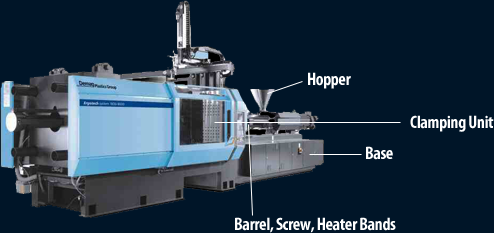Oem Fundamentals Explaineds
Wiki Article
Some Ideas on Lean Production You Need To Know
Table of ContentsUnknown Facts About Plastic ManufacturingThe Facts About Manufacturing UncoveredAll About MfgNot known Facts About Hon Hai PrecisionGetting My Lean Production To WorkThe Buzz on Mfg
The text on this page is a sample from our full White Paper 'Injection Moulding for Buyers' - * Sample text * - for complete overview click the download button above! Intro This overview is intended for people that are seeking to resource plastic mouldings. It gives a much needed insight right into all that is entailed with producing plastic components, from the mould device needed to the moulding process itself.If you want to check out additionally, the guide covers kinds of mould tools, in addition to special ending up processes such as colours & plating. Words that are underlined can be found in the reference in the appendix ... Part I: Moulding: The Basics The Benefits of Injection Moulding Plastic shot moulding is a really specific procedure that supplies several advantages over other plastic handling approaches.
Precision is excellent for very detailed parts. You can hold this moulding in the hand of your hand as well as it has managers, ribs, steel inserts, side cores as well as holes, made with a moving shut off attribute in the mould tool.
The Greatest Guide To Lean Production


The Of Lean Manufacturing
from material feed & melting; material injection; cooling time cooling down ejection and also the re-closing of the mould tool ready for the next cycle. Draft angles - The wall surfaces of a moulded part should be slightly tapered in the direction in which the part is expelled from the mould tool, to allow the component to be expelled quickly.Ejector stroke - The pushing out of ejector pins to expel the moulded component from the mould device. Ejector stroke speed, length as well as timing requires to be very carefully managed to avoid damages to the ejectors as well as mould tool, however at the exact same time make the moulding cycle as short as feasible.

Some Ideas on Mfg You Need To Know
Ribs - When a plastic part has slim walls, ribs are included in the layout to make the thin walls stronger Side cores - Side activity which creates an attribute on a moulded component, at an opposing angle to the typical opening direction of the mould device. hon hai precision. The side core needs to be able to withdraw as the plastic component can not be expelled or else.
Wall surfaces - The sides of a moulded component The message on this web page is an example from our complete White Paper 'Injection Moulding for Buyers'.
Shot moulding is widely utilized for manufacturing a selection of components, from the tiniest this post parts to entire body panels of vehicles. Shot moulding uses a special-purpose machine that has three parts: the injection system, the mould and the clamp.
The Lean Manufacturing Ideas
, with the quantity utilized of the former being considerably higher.: 13 Thermoplastics are widespread due to features that make them extremely ideal for shot moulding, such as convenience of recycling, convenience for a wide selection of applications,: 89 and also capacity to soften and also flow on home heating.In several tooth cavity moulds, each cavity can be the same and develop the same parts or can be unique and also create numerous various geometries during a solitary cycle. Moulds are usually made from tool steels, yet stainless steels and also aluminium moulds are suitable for certain applications. Aluminium moulds are generally ill-suited for high volume production or parts with narrow dimensional tolerances, as they have substandard mechanical residential or commercial properties and also are much more prone to use, damages, and also deformation during the injection as well as securing cycles; nevertheless, aluminium moulds are affordable in low-volume applications, as mould manufacture expenses and time are substantially decreased.
When enough product has actually collected, the material is forced at high pressure and speed right into the component creating cavity. The exact quantity of contraction is a feature of the material being used, and can be relatively foreseeable. To avoid spikes in pressure, the procedure typically makes use of a transfer placement representing a 9598% complete dental caries where the screw changes from a constant velocity to a continuous stress control.
The 6-Minute Rule for Lean Manufacturing
The packaging More hints stress is used up until the gateway (dental caries entry) strengthens. Due to its little size, the gateway is typically the very first area to strengthen with its entire thickness.: 16 Once the entrance strengthens, no more material can get in the tooth cavity; accordingly, the screw reciprocates and acquires material for you could try this out the following cycle while the material within the mould cools down so that it can be ejected and also be dimensionally steady.Report this wiki page